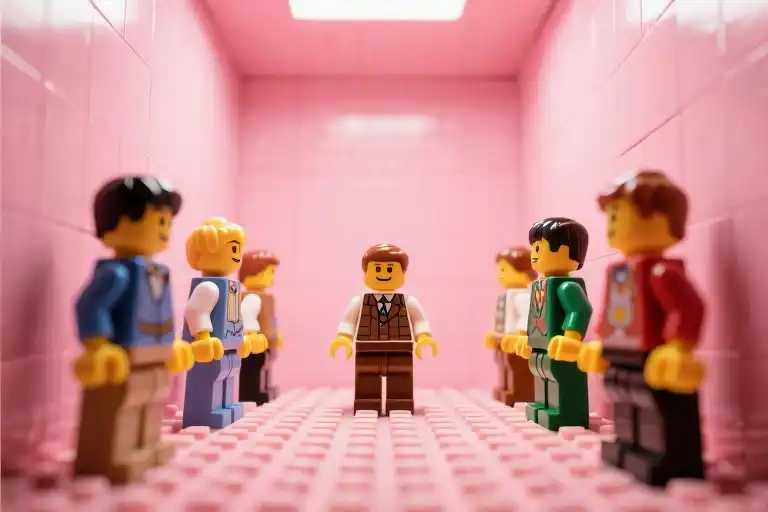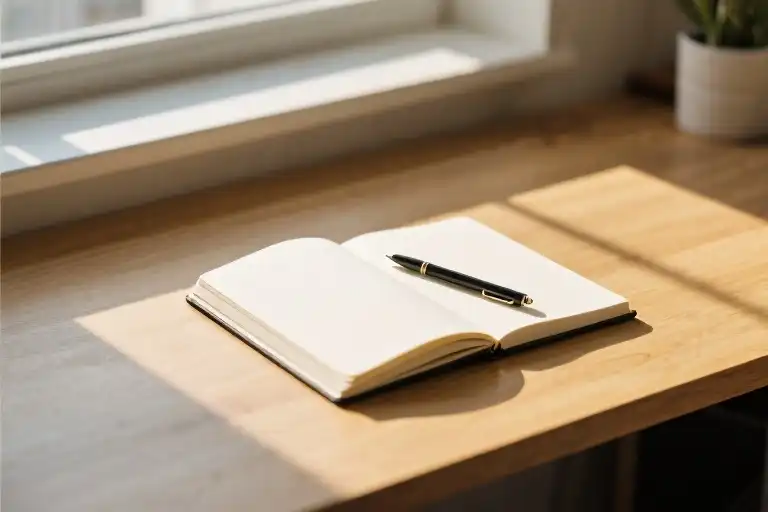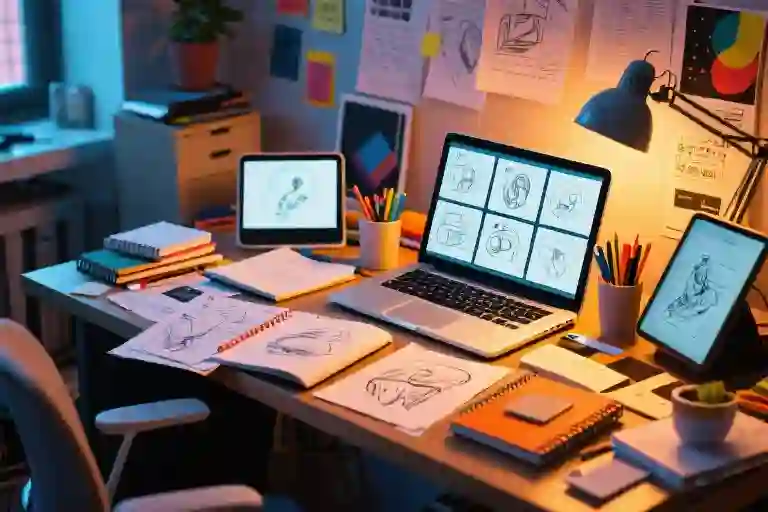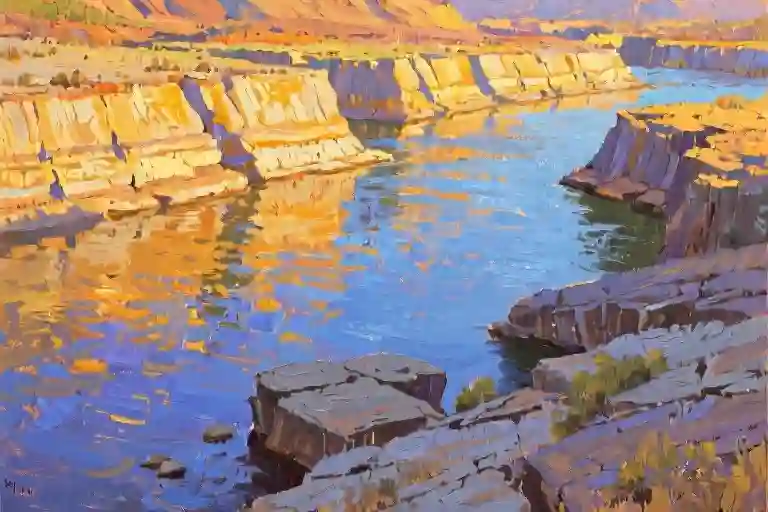That single frame from The Grand Budapest Hotel — the one with the perfectly symmetrical lobby, the pastel pink walls, and the bellboy standing rigidly at attention — could only belong to Wes Anderson. Just as the trunk shot of a pair of feet in Pulp Fiction screams Quentin Tarantino. These directors don’t need credits to announce themselves; their visual signatures are etched into every frame they create. It’s what I like to call a cinematic fingerprint — the unmistakable mark of a storyteller who’s found their visual voice.
Now, here’s the thing: that kind of signature style isn’t reserved for Hollywood auteurs. It’s something any visual storyteller can cultivate, whether you’re shooting blockbusters, street photography, or — in my case — tiny plastic figures staged under carefully angled desk lamps. For the past few years, I’ve been obsessed with toy photography, that peculiar niche where LEGO minifigures become protagonists in their own cinematic universes. My workspace is cluttered with 1.5-inch heroes, hand-painted backdrops, and an embarrassing number of makeshift diffusers (read: repurposed takeout containers). And while I’m still years away from having my own Andersonian level of recognizability, I’ve started noticing patterns in my work — a tilt toward center-framed compositions, a preference for twilight color grading, an inexplicable urge to place every miniature just slightly below eye level to mimic that heroic movie-poster gaze.
This is where it gets interesting. The same principles that make Anderson’s pastel symmetry or Tarantino’s trunk shots so iconic can be scaled down — way down — to fit inside a shoebox studio. Because visual style isn’t about budget or subject matter; it’s about consistency of vision. Whether you’re framing Margot Robbie or a plastic astronaut, the tools are the same: deliberate composition, controlled lighting, and that elusive something that makes the work undeniably yours. Over time, these choices accumulate into a language — one that your audience learns to recognize even before they see your name in the credits.
So how does this translate when your leading lady is a LEGO figure with limited joint mobility? Surprisingly well, actually. That trunk shot Tarantino loves? Try it with a minifigure peering over the edge of an open jewelry box. Anderson’s trademark symmetry? Recreate it with two identical robot figures flanking a tiny retro TV. The constraints of miniature photography — the fixed expressions, the lack of realistic textures — force you to compensate with even stronger visual storytelling. Every prop becomes a plot point, every shadow a line of dialogue.
What fascinates me most isn’t just the technical challenge of replicating these techniques at Lilliputian scale. It’s the realization that style isn’t something you apply to your work like a filter — it’s something that emerges, sometimes stubbornly, from the way you see the world. Even when that world fits on a coffee table.
The Visual Codes of Master Filmmakers
Certain frames from films imprint themselves in our collective memory with startling clarity. That perfectly centered shot of the pastel-hued Grand Budapest Hotel lobby. The trunk’s-eye view of a crime scene gone wrong. The spinning top that may or may not keep rotating. These aren’t just memorable moments—they’re visual autographs left by filmmakers who’ve mastered the art of signature style.
Wes Anderson: Symmetry as Storytelling
Anderson’s films operate like meticulously wound clockwork, where every composition serves both aesthetic and narrative purpose. His signature symmetrical framing—whether it’s young lovers perfectly centered in a doorway or a train cutting horizontally across the screen—creates a storybook quality. But there’s more beneath the surface:
- Color as emotional language: The candy-colored palette of The Grand Budapest Hotel uses specific HSL values (notably pinks at 350° hue with 80% saturation) to evoke nostalgia
- Practical symmetry: Unlike digital centering, Anderson often achieves balance through physical set construction, making his miniatures and forced perspectives feel tangibly real
- The human touch: Notice how his symmetrical shots frequently include one slightly off-kilter element—a character leaning left, a cloud drifting right—preventing sterility
This approach translates surprisingly well to toy photography. That LEGO minifigure centered in your frame? Try shooting it straight-on with a ruler-flat horizon line, then add one deliberately imperfect element—maybe a tilted lamp post or asymmetrical shadow.
Quentin Tarantino: The Power of Unconventional Angles
While Anderson shows us orderly worlds, Tarantino grabs our collar and yanks us into the action—often literally through his trademark trunk shots and extreme low angles. His visual fingerprints include:
- The “underbelly perspective”: Shooting upward from floor level makes even 6-inch action figures feel monumentally dangerous
- Blood as primary color: That specific shade of crimson (leaning slightly orange, never blue-toned) becomes a recurring character
- Feet first: More podiatry shots than any director in history, proving even mundane body parts can become stylistic signatures
For toy photographers, this translates to getting your camera down in the dirt—shoot upward through clear acrylic “glass” to simulate trunk shots, or place miniatures on mirrors to double their presence. Remember: unconventional angles force viewers to engage differently with familiar subjects.
Christopher Nolan: Practical Scale
Where others would use CGI, Nolan builds physical sets—whether it’s a rotating hallway for Inception or real IMAX cameras mounted on fighter jets. His style teaches us:
- Tangible textures matter: Even at 1:12 scale, real materials (metal not plastic, actual fabric not printed textures) catch light authentically
- Perspective tricks: Forced perspective works whether you’re filming Christian Bale or a LEGO Batman—position closer objects slightly out of frame to sell the illusion
- Light as timekeeper: Notice how Nolan uses shifting light angles (that spinning hallway scene) to indicate temporal disorientation—a technique adaptable to miniature dioramas with movable LED sources
What these directors share isn’t just technical prowess, but consistency. Anderson didn’t invent symmetry, Tarantino didn’t create low angles, and Nolan wasn’t first to practical effects—they committed to these choices relentlessly until the style became inseparable from their identity. That’s the real lesson: your signature style emerges not from single perfect shots, but from the accumulated weight of deliberate repetitions.
Perhaps the most comforting takeaway? These masters all started somewhere—likely with far less polished work than what we see today. Your toy photography journey, your experimental videos, your imperfect attempts—they’re all part of developing that visual handwriting. The key is keeping at it long enough for the world to recognize your work without seeing your name attached.
From Screen to Toybox: Translating Cinematic Techniques
That moment when you instantly recognize a director’s work from a single frame isn’t magic—it’s meticulous craft. What if we could shrink those big-screen techniques down to fit our toy photography setups? The good news: cinematic principles scale beautifully, even when your subjects stand just 1.5 inches tall.
The Low-Angle Revolution
Tarantino’s trunk shots taught us how perspective creates power dynamics. That same principle transforms LEGO minifigs from plastic toys to dramatic protagonists. Try placing your camera at knee-level (or rather, minifig-ankle-level) to mimic his signature shots. Suddenly, a simple LEGO cowboy becomes a towering figure against a DIY cardboard sunset. The technical secret? A 25mm lens (or your phone’s portrait mode) maintains proportions while exaggerating depth.
Lighting That Tells Stories
Remember how Blade Runner’s neon glow defined its cyberpunk aesthetic? We can recreate that atmosphere with dollar-store materials. A small LED panel wrapped in colored cellophane becomes a futuristic streetlight. For those iconic Ridley Scott sidelights, position two smartphone flashlights at 45-degree angles—one gelled blue, the other orange. The resulting contrast makes even plastic figures look like they’re harboring dark secrets.
Color Grading for Tiny Worlds
Wes Anderson’s pastel palette didn’t happen by accident. When shooting toys, I create custom white balance settings—5200K for his signature “The Grand Budapest Hotel” warmth, or 4000K for “Moonrise Kingdom” nostalgia. In post-processing, I’ll often:
- Boost saturation by 15-20%
- Crush blacks slightly (-5 on the curve)
- Add a teal-orange split tone (2:1 ratio)
It’s surprising how these subtle tweaks make LEGO bricks feel like they belong in a Criterion Collection release.
Practical Challenges (And Solutions)
Working at this scale presents unique hurdles. That beautiful bokeh effect? Much harder when your depth of field measures in millimeters. I’ve learned to:
- Use macro extension tubes for tighter shots
- Shoot at f/8-f/11 to keep entire minifigs in focus
- Create artificial blur in post using gradient masks
And about those intricate backgrounds—they don’t need to be physically large. A 12×12″ watercolor painting, when shot close enough, becomes an endless desert or sprawling cityscape.
The real magic happens when these techniques stop feeling borrowed and start feeling like your own. Maybe your “signature” becomes backlighting every figure like a 1980s action hero, or always including a tiny red balloon in scenes as your visual calling card. That’s when you’ll know the language of cinema has fully translated to your miniature universe.
Building Your Style Lab
The most intimidating part of developing a signature photography style isn’t the technical execution—it’s deciding what that style should be in the first place. I’ve lost count of how many times I’ve arranged my LEGO minifigs under perfect lighting, only to stare at the setup thinking: Is this really ‘me’?
The Style Compass Questionnaire
Before touching your camera, try this quick self-interview:
- Mood Preference: Do your favorite images lean toward moody shadows (like film noir) or cheerful brightness (Wes Anderson pastels)? My early work waffled between both until I realized I kept being drawn to twilight ambience—that magical half-hour when shadows grow long but colors still pop.
- Storytelling Approach: Are you documenting miniature reality or creating fantasy? Some toy photographers meticulously recreate historical scenes, while others (like me) enjoy absurd scenarios—a stormtrooper sipping coffee at a dollhouse café.
- Technical Crutch: Which element do you instinctively rely on? For me, it’s always been dramatic backlighting—the way rim light outlines a minifig’s edges makes them feel alive. Yours might be macro details, forced perspective, or inventive props.
Practical Style Experiments
Once you’ve identified preferences, test them through controlled experiments:
- Lighting Trials: Shoot the same minifig under five different lighting conditions (hard side light, soft overhead, backlight, etc.). Keep notes on which setups feel most natural to you.
- Color Palette Tests: Edit one photo three ways—muted tones, vibrant saturation, monochrome. Your gut reaction often reveals more than overanalysis.
- Angle Exploration: Spend a week shooting from unusual perspectives—worm’s-eye view through fake grass, or a “security camera” top-down angle. My breakthrough came when I started placing figures slightly below eye level, creating an intimate viewer connection.
Social Media as Your Focus Group
Post your experiments with honest captions: “Trying something new—does this dark cinematic style work?” The algorithms might not reward vulnerability, but the right audience will engage. I discovered my signature backdrop style (hand-painted textures blending with real-world elements) through follower feedback on failed attempts.
Remember: Your style isn’t static. Mine evolved from clean studio shots to environmental storytelling once I realized I enjoyed crafting tiny worlds more than perfecting individual portraits. The lab is always open—what will you mix into your creative beaker today?
Beyond the Single Frame: Crafting a Cohesive Visual Universe
That moment when someone scrolls through your Instagram grid and says, “Oh, this has to be yours”—that’s the magic we’re chasing. Building a signature photography style isn’t just about creating standout individual images; it’s about constructing an entire visual universe where every piece whispers your name. When your 1.5-inch LEGO figures start feeling like recurring characters in an ongoing cinematic saga, you’ll know you’ve cracked the code.
The Power of Visual Anchors
Great directors plant subtle signatures throughout their work—Wes Anderson’s pastel color palettes aren’t just pretty; they’re psychological anchors that prime audiences for his whimsical worlds. In toy photography, these anchors could be:
- A recurring prop (that tiny red balloon in every third shot)
- Signature lighting (always backlighting your mini figures like they’re in a 1980s action movie)
- Thematic consistency (all your spaceship dioramas use the same metallic blue gradient)
I’ve been experimenting with placing a single white chess pawn somewhere in each of my medieval LEGO scenes—hidden in a corner, held by a minifigure, half-buried in “snow.” It’s become my visual Easter egg, creating connective tissue between otherwise unrelated images.
Designing Your Style Blueprint
Creating a cohesive series starts before you press the shutter. Try this exercise: grab three sticky notes and label them:
- Color DNA: List 3-5 colors that’ll dominate your palette (mine: mustard yellow, slate gray, and that specific LEGO sand green)
- Visual Verbs: How your compositions “speak” (wide establishing shots? extreme close-ups? Dutch angles?)
- World Rules: The physics of your miniature universe (always rainy? gravity-defying? perpetually golden hour?)
When I committed to shooting all my pirate scenes as if viewed through a ship’s foggy window (achieved with vaseline on a UV filter), suddenly my feed stopped being random LEGO shots and started feeling like chapters from the same storybook.
Cross-Pollination Inspiration
Some of my most cohesive series came from stealing—er, borrowing—from unexpected places:
- Music: Structured a LEGO jazz club series around the rhythm of album cover designs
- Architecture: Shot a whole cyberpunk sequence using only Brutalist building angles
- Food Photography: Borrowed cake-styling techniques to arrange miniature “feast” scenes
The key is adaptation, not imitation. That sushi photography tutorial you watched? Those precise knife-cut compositions could transform how you arrange your mini figure battle formations.
When Consistency Becomes Constraint
A warning from the trenches: style guidelines shouldn’t strangle creativity. I once became so obsessed with maintaining “my look” that I rejected great shots for breaking “rules” that existed only in my head. Now I keep a “playground” folder—images that diverge from my usual style but help me grow. Sometimes the chess pawn stays in the box.
Your visual signature isn’t a cage; it’s the trellis that lets your creativity climb higher. Because at the end of the day, whether you’re Spielberg or someone staging epic dramas with plastic knights, what we’re really building isn’t just images—it’s a world viewers want to revisit. And that world can be any size you choose.
Finding Your Visual Signature
We’ve dissected the visual DNA of iconic filmmakers, adapted their techniques for miniature worlds, and even built our own style laboratories. Now comes the most thrilling part—discovering what makes your work unmistakably yours.
The Courage to Leave Fingerprints
Developing a signature photography style isn’t about perfection—it’s about consistency in your creative choices. Those LEGO minifigs standing at slight angles against hand-painted backdrops? They’re becoming my visual autograph, just as Wes Anderson’s pastel symmetry serves as his. The magic happens when someone scrolls past your image in a crowded feed and immediately knows it’s yours before seeing the watermark.
Your Style Starter Kit
- The Recurring Element: Maybe it’s always shooting from a worm’s-eye view, or that particular shade of teal in your backgrounds. Mine? The slightly distressed edges on my miniature dioramas that whisper “well-loved storybook.”
- The Technical Tell: Your lighting ratio (I favor 1:2 for that soft cinematic glow) or preferred focal length becomes part of your visual handwriting.
- The Emotional Throughline: My toy photos often carry quiet melancholy—unexpected for plastic figures, but that emotional fingerprint resonates with viewers.
Beyond the Single Frame
True signature styles transcend individual works. Consider:
- Creating a “visual family” across images through recurring props (that tiny vintage camera in every third shot)
- Developing series with interconnected narratives (my ongoing “Minifig Noir” detective saga)
- Establishing post-processing presets that subtly brand your work without overwhelming it
The Beautiful Paradox
Here’s the secret no one mentions: Your style will find you while you’re busy creating. My center-framed compositions emerged unconsciously after shooting 200+ images. That “signature look” was there all along—I just needed to recognize it in my own work.
Your Turn at the Viewfinder
What tiny creative choices are already sneaking into your work? Share your experiments with #MyToyStyle—I can’t wait to see how your visual voice develops. Remember what cinematographer Gordon Willis said: “Style is knowing what you’re doing and why.” Even when you’re working with plastic actors and makeshift sets, that intention shines through.
“Your unique perspective fits somewhere between the lens and the subject—no one else stands exactly there.”





